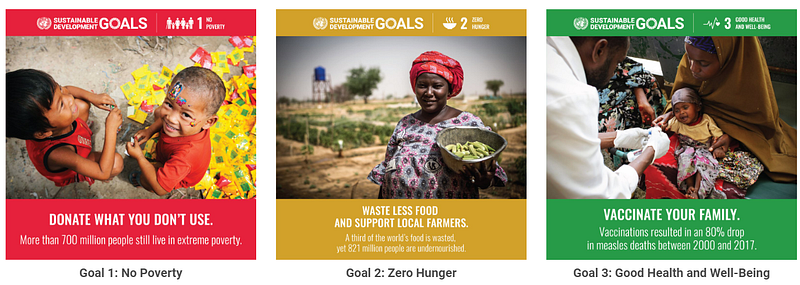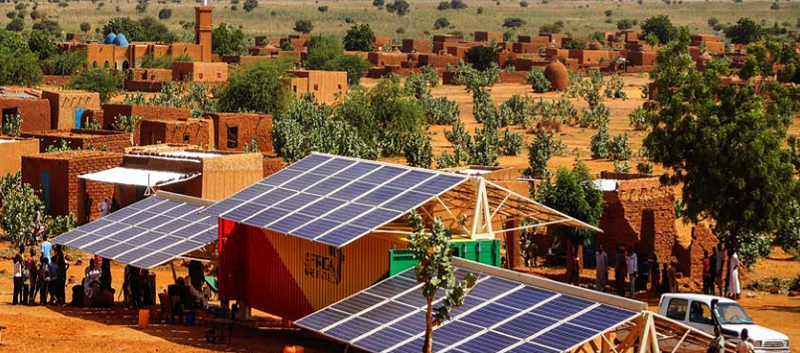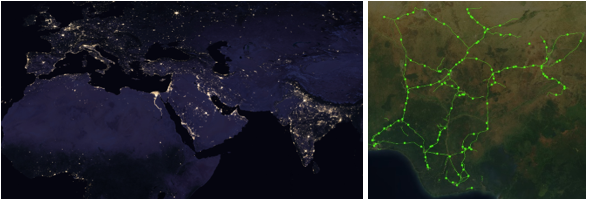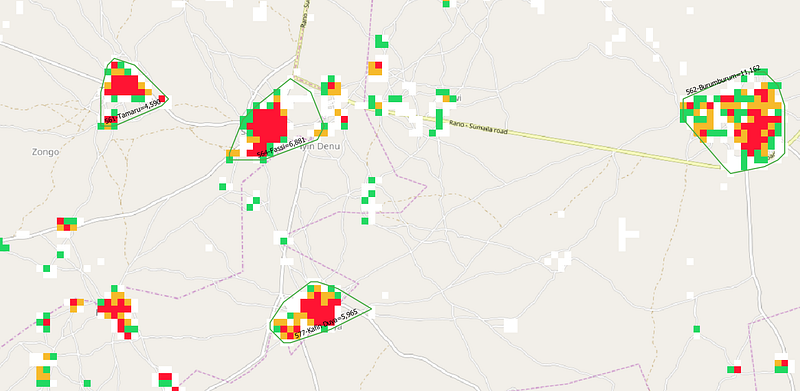AI Applied: Providing Communities in Nigeria With Solar Energy
How AI identifies high-impact solar installation locations in Nigeria, bringing electricity to underserved communities and improving education, health, and livelihoods.

December 4, 2025
8 minutes read

Giving people access to renewable energy in places that need it most has the potential to tackle many of the world’s most pressing problems. It is not just about flipping on a light bulb — it is about education, healthcare, employment and dignity. The United Nations Sustainable Development Goals make this point clear, and they provide a powerful framework for understanding why clean energy matters for every other aspect of development. As one of those goals notes, affordable and clean energy is a foundation on which communities can build their future.

The UN has identified a number of goals to make the world a better place.
The power of building AI through collaboration
For many people who are passionate about artificial intelligence, the journey begins with online courses, Kaggle competitions or hobby projects that mimic famous politicians on social media. A career in data science often means working on advertising algorithms or chatbots that answer customer questions. Those projects are intellectually stimulating, yet they can feel disconnected from the real problems facing billions of people.
This question — surely there is a way to use AI to make a more positive impact on the world? — motivated me to join an Omdena Challenge. Over two months, a multi‑national team partnered with a Nigeria based NGO Renewable Africa to see whether data science could help provide affordable, clean electricity to communities in Nigeria. The experience proved that collaboration, persistence and open knowledge sharing can turn AI into a tool for social good.
The problem: 100 million people without electricity
Nigeria is home to about 200 million people, yet only half have access to electricity. Without electricity there are no computers or internet connections. Food spoils without refrigeration, water pumps sit idle, and mobile phones become useless. Schools and hospitals struggle to offer even basic services. Widening electricity access is an essential first step for improving education, healthcare and local economies.
Centralized planning has failed to meet Nigeria’s electricity demand. The government fixes prices and profits in ways that discourage investment, corruption is endemic, banks will not lend to new power plants, and half of the existing plants lie idle while the others operate below capacity. Millions live “under the grid” yet remain unconnected; some were previously connected but equipment broke and was never replaced; others receive just enough power for a single light bulb or face daily power cuts that make electricity unreliable.
The solution: off‑grid solar energy

Off‑grid, solar energy puts local people in control
One answer is localized, off‑grid, renewable energy in the form of solar panels serving small communities of up to 4 000 people. This approach protects against any single point of failure, puts control in the hands of local people and requires less capital up front than building large centralized plants. Crucially, off‑grid systems can be financed more easily because investors see faster returns.
Implementing off‑grid solar at scale, however, requires knowing where to place panels first. Providing a minimal electricity supply to everyone in Nigeria would require more than 25 000 panels. We can apply data science to ensure the available funding is used efficiently to provide electricity to as many people as possible. That is where AI becomes a powerful ally.
AI in Nigeria: overcoming challenges
There is no shortage of data relevant to Nigeria’s energy system, but finding, validating and labelling that data proved to be a major part of the challenge. Many datasets were inaccurate or not fit for our purpose. Team members had to develop skills in analysing geographic sources at different resolutions and learn how to present them in a way that decision makers could understand. Nobody came into the project as an expert; everyone had to learn quickly, adapt and share knowledge.
Identifying the demand
Nigeria can be split into 775 census areas, but it is such a large country that a single census area can cover 1 000 km². Within that area, we need to know whether people are clustered in one town or scattered across hundreds of villages. The typical method uses satellite images to classify land use, then applies estimates of relative density to allocate census numbers to buildings. Random forest models can enhance this process by incorporating multiple variables.
In practice, the results often looked wrong. There are also question marks over the accuracy of the census itself. Because census numbers determine how national funding is allocated, local officials have incentives to overstate populations. Even the widely quoted estimate that Nigeria has 200 million inhabitants may be off. At the local level, the official numbers could be completely wrong.
A bottom‑up approach
A recent healthcare project discovered that none of the standard population models worked well on the ground. Instead, it created a bottom‑up statistical model based on areas where the population was known and expanded this using micro‑surveys. This approach produced numbers that looked far more realistic. By building on what could be verified and then extrapolating cautiously, we were able to improve our understanding of where the demand for electricity really exists.
Mapping existing electricity

Satellite images show the existing electricity. The grid has been mapped using machine learning.
Identifying potential sites for solar panels also requires excluding places that already have electricity. Towns close to the existing grid receive low priority because they are more likely to get connected directly in the future. There is a vast and freely available archive of satellite data, including night‑time images that make towns with light clearly visible.
Validating those images is essential. Here we leveraged the power of Google Maps. It was remarkable to zoom in on a road in Nigeria and see whether it had street lamps. By choosing a selection of test towns, calibrating the night‑time images and cross‑checking them with map imagery, we could tell with confidence which communities already had power.
As for the electricity grid itself, you might assume that government agencies or electricity companies know where their cables are. They do not. Fortunately, an existing model combined machine learning on satellite images with human checking to identify grid lines. That combination of automated detection and human validation became an important building block for our own mapping.
Outputs and analysis

Clusters of 4 000 people without electricity and more than 15 km from the grid
To target potential sites, cluster analysis was applied to the population data. We looked for groups of 4 000 or more people within a small radius, filtering out those that already had electricity or were close to the existing grid. The clusters that remained were then combined with other information such as a solar irradiance model and datasets on health and education establishments. The result was a map showing potential sites for off‑grid solar installations together with a spreadsheet ranking the opportunities. A more technical explanation of the methodology can be found here.
Key benefits
The sponsoring NGO Renewable Africa can now confidently survey a selection of sites suitable for solar panels. The data is also being shared with the Nigeria Renewable Energy Agency (REA), a major funding source for off‑grid electrification projects. By targeting sites more precisely, both organisations can ensure that every dollar invested brings electricity to more people.
Better electricity access means improved healthcare, stronger educational outcomes and more vibrant local economies. The quality of life for millions could improve significantly. For the project team, it was an opportunity to learn about Nigeria, renewable energy, satellite imagery, population modelling and the technical skills needed to work with geographic data. Most satisfying of all was using AI to solve a real problem affecting real people. AI is not about models for their own sake; it is about solving problems.
Conclusion
This project demonstrated that when data scientists collaborate with communities and NGOs, artificial intelligence can serve a social purpose. Nigeria’s electricity crisis is complex, but off‑grid solar energy combined with careful data analysis offers a practical path forward. By investing in local solutions and using AI to allocate resources wisely, we can help bring light to the millions who still live in darkness. In doing so, we also answer that nagging question shared by many in the AI community: yes, there is a way to use our skills to make a positive impact on the world.
If you’re working to improve energy access and uplift local economies, Omdena can support you in building AI-powered tools that reveal demand hotspots and help deploy solar systems where they will change lives.



